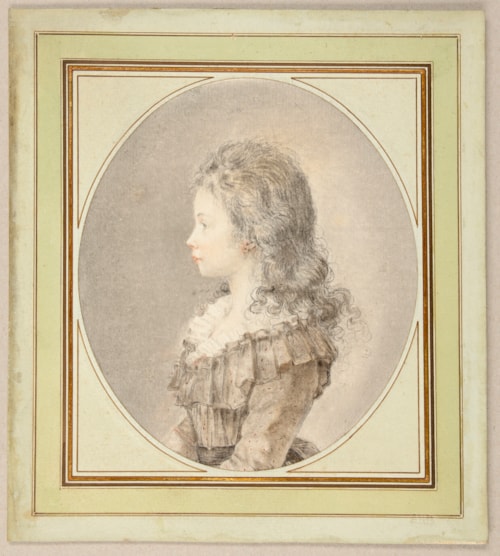
Augustin de SAINT-AUBIN
Paris 1736 - Paris 1807
Biography
One of the foremost portrait engravers in France in the latter half of the 18th century, Augustin de Saint-Aubin was the most successful and prolific member of a prominent family of artists. Like his elder brother Gabriel, who was his first teacher, Augustin was not only a skilled engraver but a gifted draughtsman as well. He completed his training in the studios of the reproductive printmakers Etienne Fessard and Nicolas-Henri Tardieu, and soon won the first prize in a drawing competition at the Académie Royale. In 1757, together with François Boucher and Charles-Nicolas Cochin the Younger, Saint-Aubin designed illustrations for an edition of Boccaccio’s Decameron. His early reputation, however, rests on a series of some forty portrait medallions engraved after designs by Cochin fils. Cochin was a great admirer of the artist, whom he claimed ‘could put life even into the drawing of a wig’, and nominated Saint-Aubin for the Académie Royale, where he was agrée in 1771. (He never submitted a reception piece, however, and as a result was denied full membership in the Academy.)
In 1776, Saint-Aubin succeeded Fessard as dessinateur et graveur de la bibliothèque du Roi, and not long afterward began to also work for the Duc d’Orléans, although the outbreak of the Revolution curtailed any extensive Royal patronage. Nevertheless, his graphic oeuvre includes more than 1,300 prints after his own designs. He continued to exhibit drawings and prints at the Salons until 1793, and spent the later years of his career designing book illustrations, frontispieces and printed ephemera, as well as engraving a large number of portrait medallions for a succession of bourgeois patrons; works strongly influenced by Charles-Nicolas Cochin.


